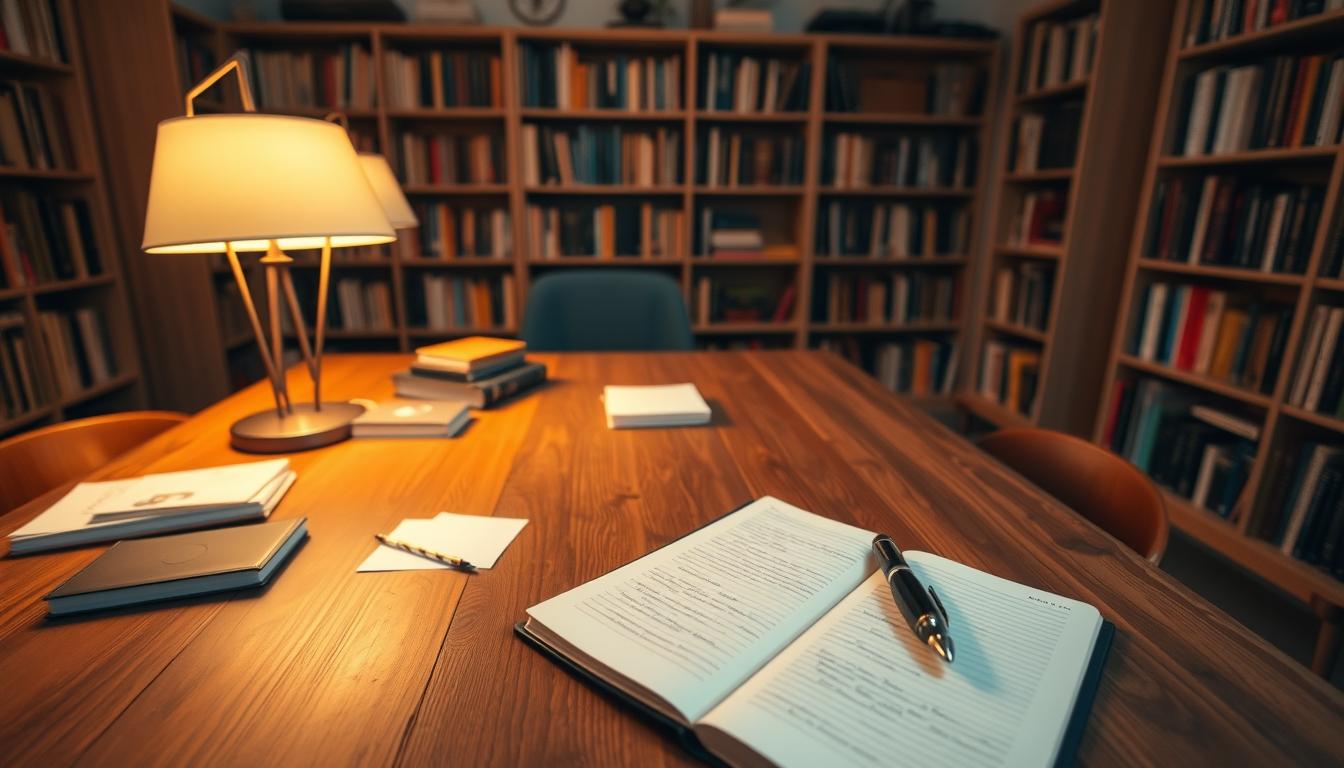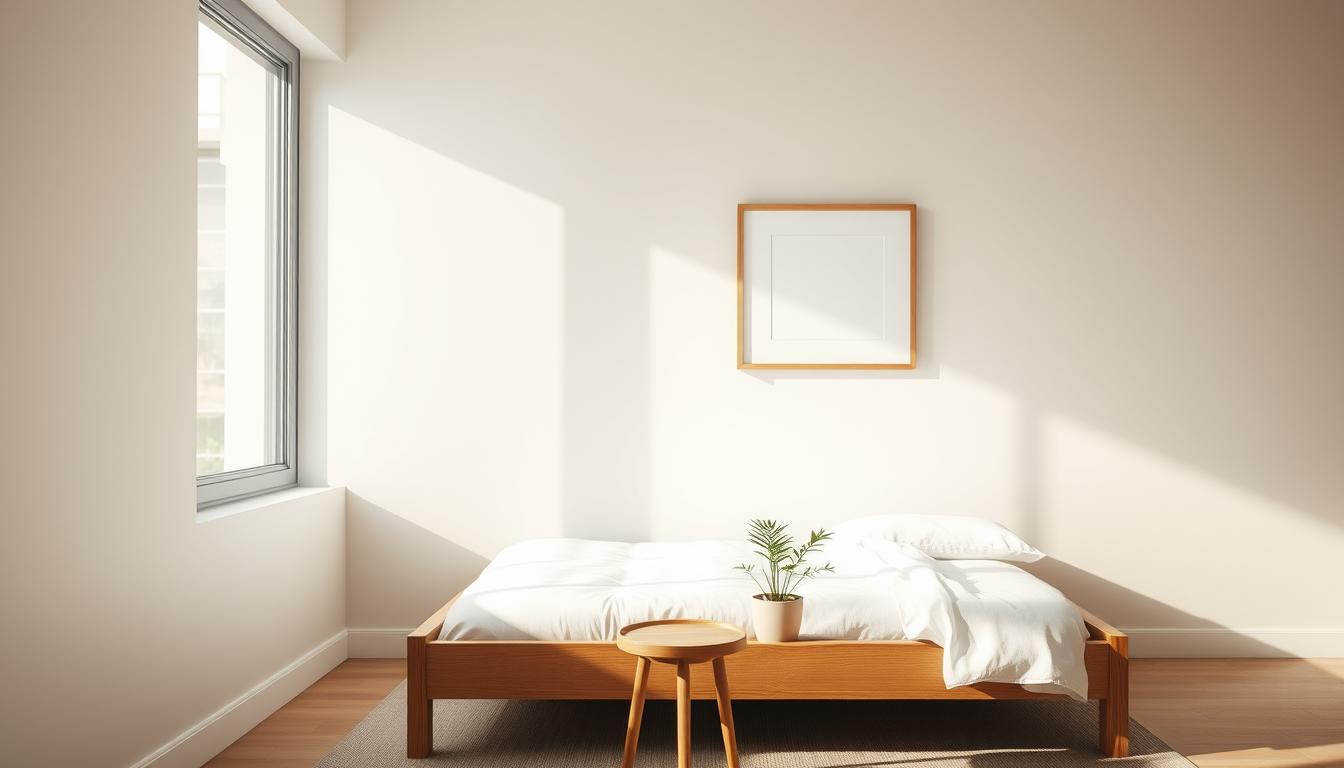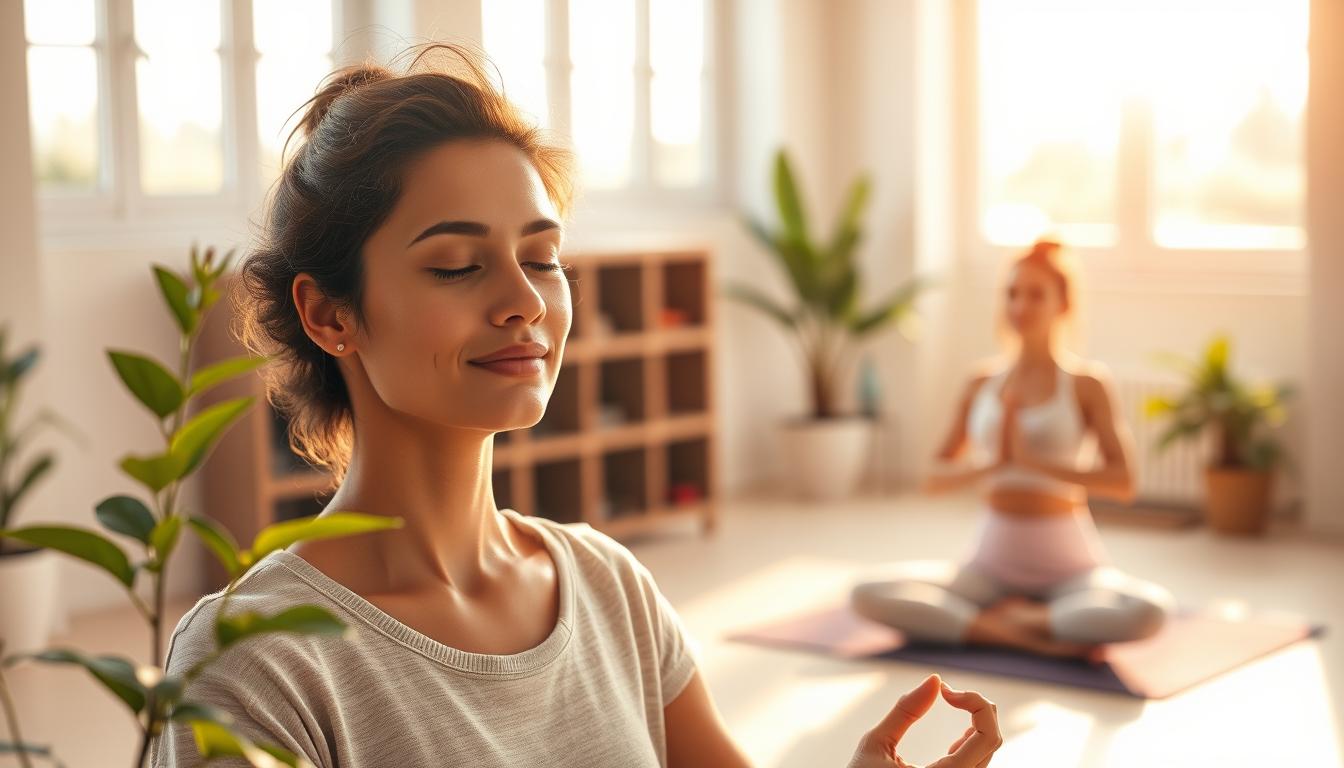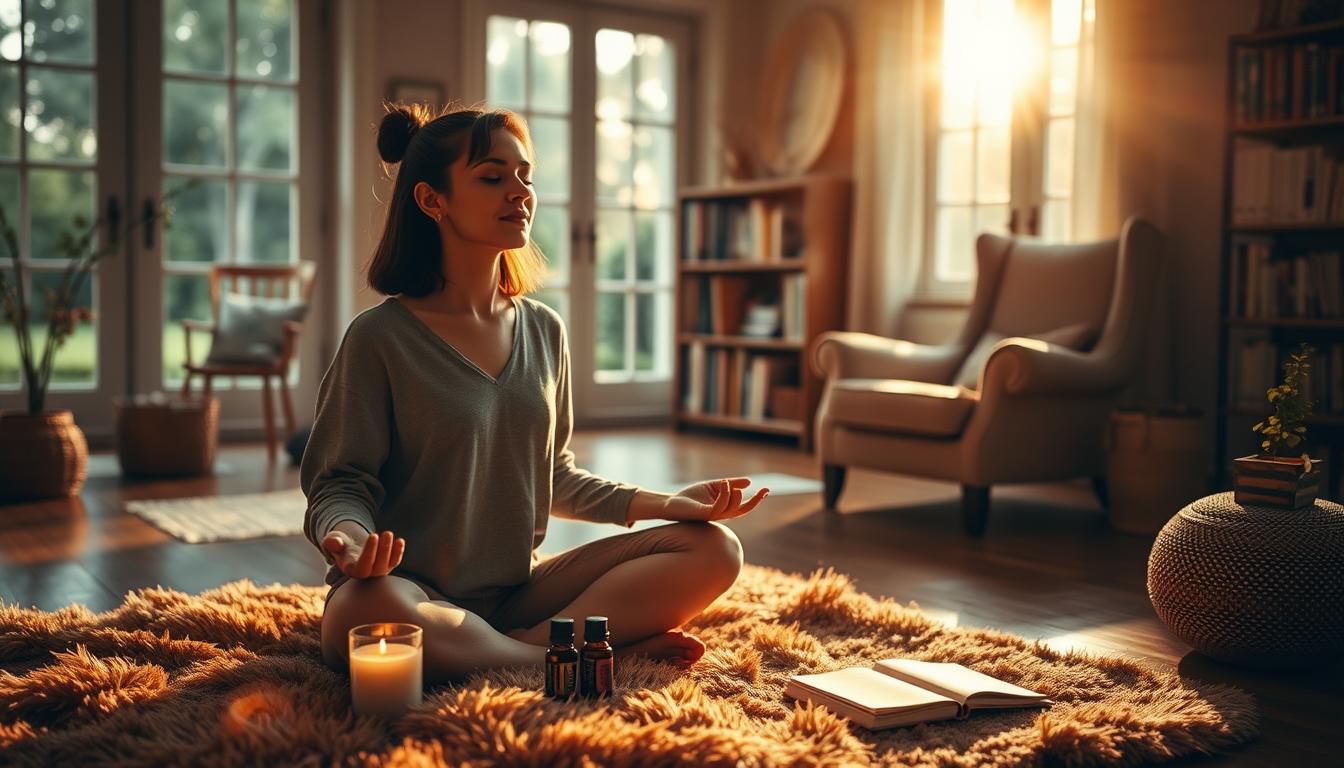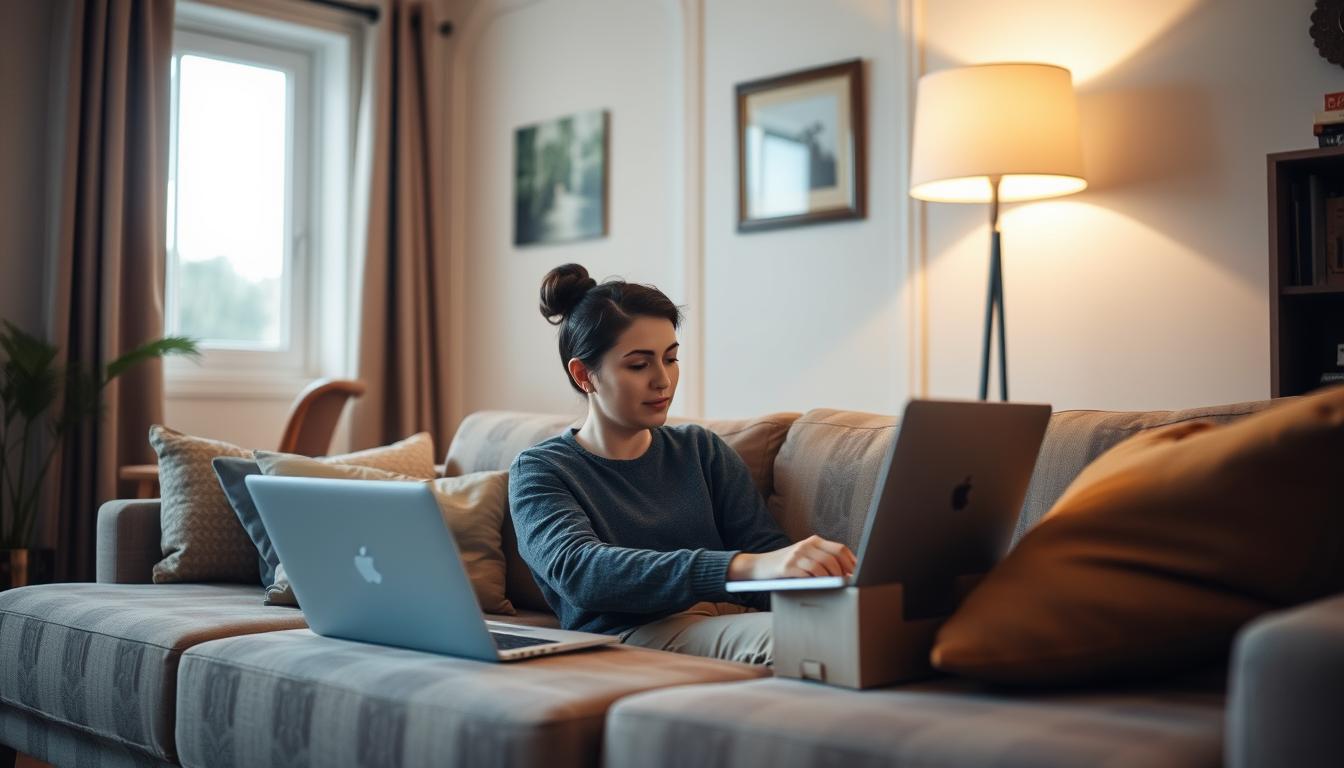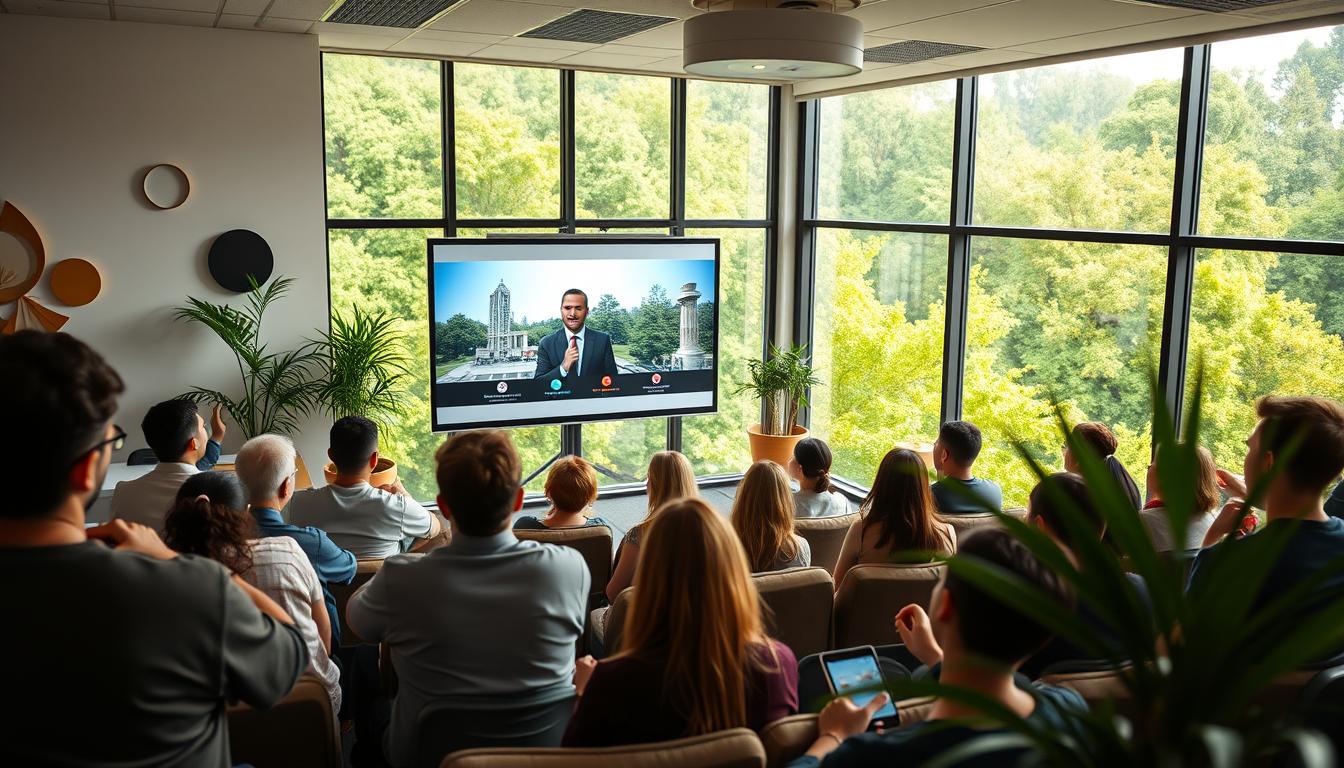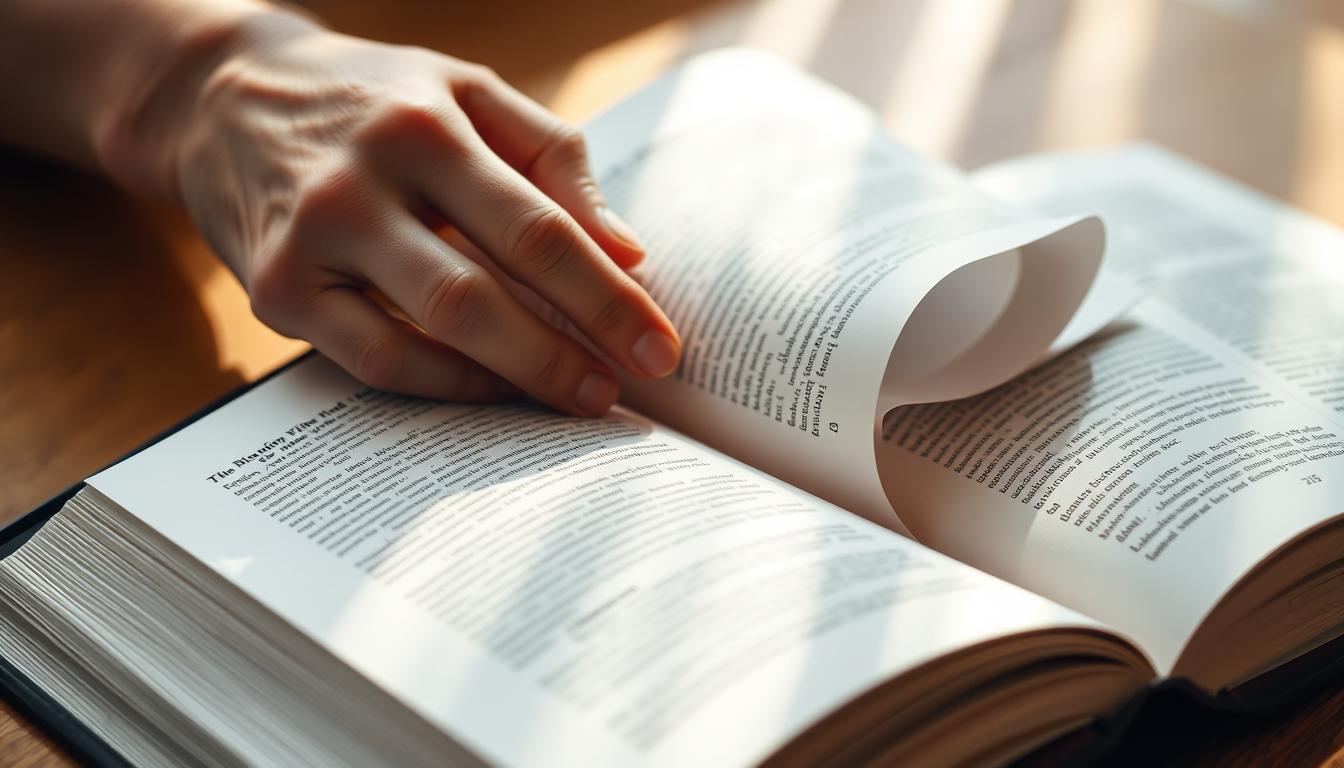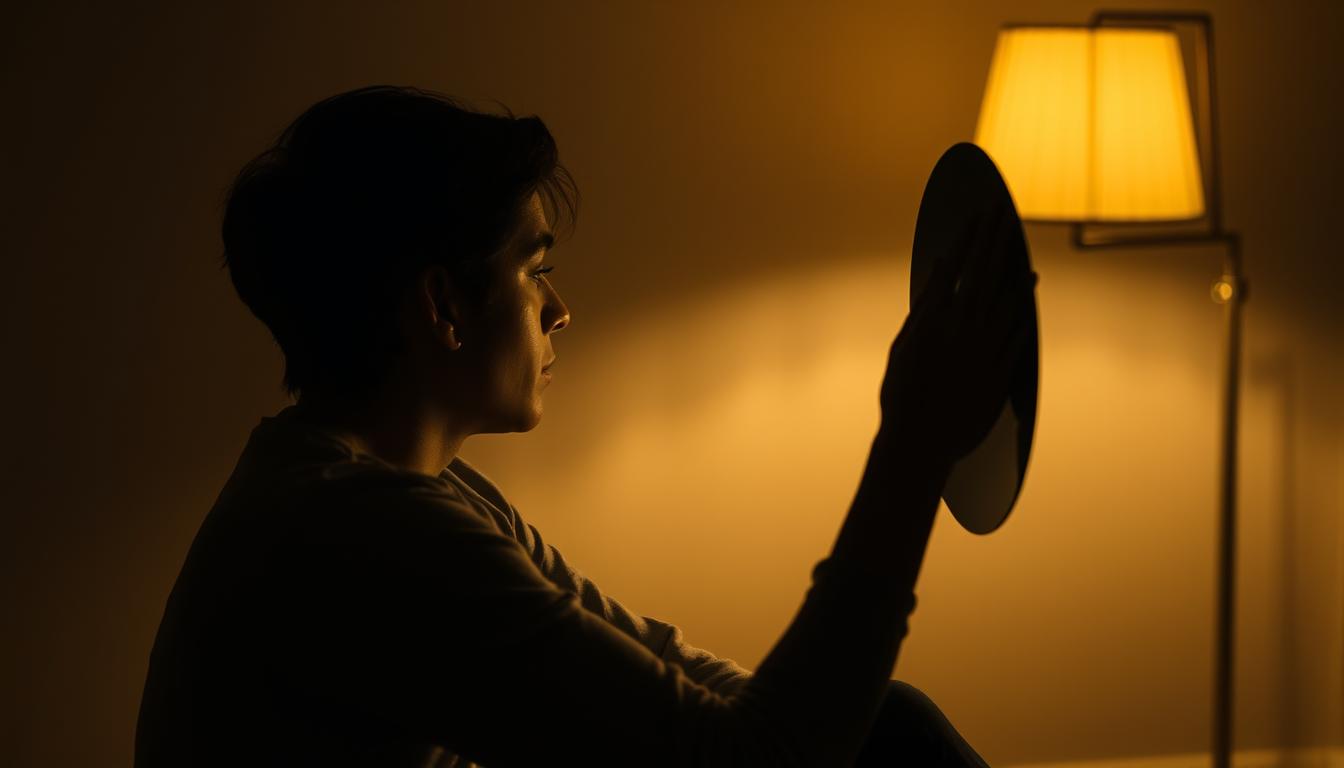“The mind is everything; whatever you think, you become.” – Buddha. Today, finding mental clarity and focus is hard. Our minds are filled with notifications and constant connection.
Starting a digital detox can be a strong mindfulness practice. It lets us take a break, recharge, and focus on what’s important. By adding self-care tips and digital detox strategies to our lives, we can boost our mental health. This helps us have a clearer, more focused mind.
We’ll look at why digital detoxes are key. We’ll also share useful resources, like products on amazon.com, to help with your mindfulness and self-care.
Key Takeaways
- Understand the benefits of digital detox for mental clarity
- Learn simple self-care tips to improve mental health
- Discover mindfulness practices to reduce digital overwhelm
- Explore resources on amazon.com to support your digital detox journey
- Cultivate a more focused mind through digital detox strategies
Understanding Digital Detox: What Is It?
In today’s world, the concept of digital detox is key for our well-being. With technology everywhere, we need to disconnect and recharge more than ever.
The Concept of Digital Detox
A digital detox means not using digital devices for a while. It helps us reset our digital habits and lower stress. It’s not about avoiding technology but finding a better balance between our digital and real lives.
Adding healthy habits like regular digital breaks can boost our well-being. A wellness expert says, “Taking breaks from tech can really help our minds stay clear and focused.”
Importance of Unplugging
Stepping away from digital devices is key for self-care. Too much screen time and constant alerts can make us tired and less productive. Unplugging lets us relax and recharge.
“The best way to take care of yourself is to give yourself permission to take a break from the digital world and focus on what truly matters.”
Common Triggers for Digital Overload
Many things lead to feeling overwhelmed by digital stuff. These include always needing to be online, fearing we’ll miss out (FOMO), and feeling pressured to answer messages right away. Knowing these triggers helps us use stress management techniques better.
- Too much social media
- Constant email alerts
- Dependence on digital fun
By understanding these triggers and making smart choices, we can start to live healthier digital lives.
Symptoms of Digital Overload
Digital overload is a big problem today. Knowing its signs is key to a healthier digital life. It’s important to recognize when we need to step back from our screens.
Signs You Need a Break
Feeling always distracted is a sign of digital overload. So is feeling anxious or stressed from too many notifications. Also, if you can’t stop checking your phone, it’s time for a break.
- Feeling irritable or restless when unable to access your devices
- Experiencing eye strain or headaches due to prolonged screen time
- Noticing a decline in your productivity or focus
Mental Health Implications
Digital overload can hurt our mental health. Too much information can make us feel overwhelmed, anxious, and depressed. Also, feeling pressured to look perfect on social media can make us feel bad about ourselves.
Knowing these risks helps us protect our mental health. Practicing mindfulness and setting limits on tech use are important steps.
Physical Effects of Excessive Screen Time
Too much screen time can harm our bodies. It can cause eye strain, headaches, and make us sit too much. This can lead to health problems like obesity and heart disease.
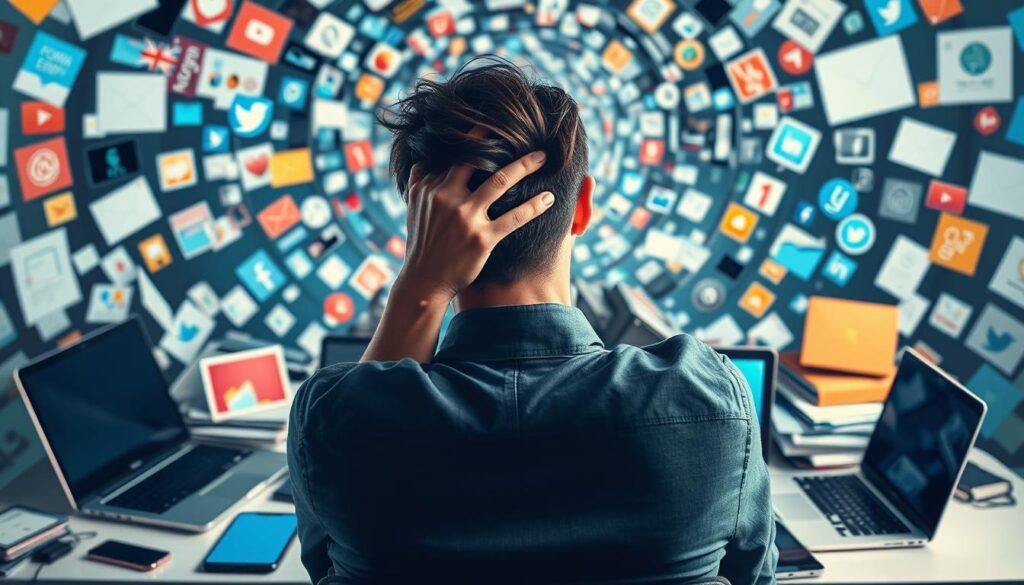
To fight these effects, we need to live a balanced life. This means exercising regularly, eating well, and getting enough sleep. By doing this, we can lessen the harm of digital overload and feel better overall.
Benefits of a Digital Detox
Going on a digital detox offers many benefits. It can improve your mental clarity, boost productivity, and help you sleep better. It also gives you time for personal growth and self-reflection.
Improved Mental Clarity
One big plus of a digital detox is clearer thinking. Being always online can make our minds tired and hard to focus. Taking a break lets our minds rest and get ready to think better.
Tristan Harris, a former Google design ethicist, says, “The way we spend our time defines who we are.” A digital detox helps us focus on what’s important.
Enhanced Focus and Productivity
Another benefit is better focus and productivity. Without distractions, we can do tasks more efficiently. This leads to more done and feeling accomplished.
- Prioritize tasks more effectively
- Manage time more efficiently
- Experience a sense of accomplishment and satisfaction
Better Sleep Quality
Lastly, a digital detox improves sleep. Smartphones and computers can mess with our sleep. Avoiding screens before bed helps us sleep better.
| Benefits | Pre-Detox | Post-Detox |
|---|---|---|
| Mental Clarity | Cloudy thinking, mental fatigue | Clear thinking, improved focus |
| Productivity | Distracted, lower output | Focused, higher output |
| Sleep Quality | Poor sleep, insomnia | Improved sleep, restful nights |
By adding these benefits to our lives, we can live healthier. Making self-care a priority improves our well-being. It helps us have a better relationship with technology.
How Digital Detox Enhances Self-Care
In today’s fast-paced world, taking a digital detox can be a game-changer for self-care. It helps us step back and rethink our tech habits. This break from technology can feel incredibly freeing.
Creating Boundaries with Technology
Starting a digital detox means setting clear limits with tech. We need to decide when and where we use our devices. This helps keep tech from taking over our personal time, reducing stress and boosting calm.
- Make some areas in your home tech-free, like the bedroom or dining area.
- Choose times when you won’t use devices, like during meals or an hour before bed.
- Try apps or built-in tools to track and limit your screen time.
Mindfulness and Presence
Digital detox helps us focus on the moment, which is key for self-care. It lets us notice our surroundings, thoughts, and feelings more clearly. This awareness helps us enjoy the present and respond to our needs with kindness.
Mindfulness practices are great during a digital detox. Things like meditation, deep breathing, or noticing our senses help us stay present. They deepen our connection to ourselves and the world.
Reconnecting with Yourself
A digital detox lets us reconnect with our inner selves. Away from digital distractions, we can find joy in activities, reflect on ourselves, and listen to our inner voice. This helps us understand our values, goals, and dreams better.
| Activity | Benefits |
|---|---|
| Meditation | Reduces stress, improves focus |
| Journaling | Enhances self-awareness, clarifies thoughts and feelings |
| Nature Walks | Boosts mood, increases connection to nature |
By making these practices part of our daily life, we keep a strong bond with ourselves. This supports our holistic wellness long after the detox is over.

Planning Your Digital Detox
Starting a digital detox is a great way to find a better balance in life. It’s important to plan it well to get the most out of it.
Setting Realistic Goals
First, decide what you want to achieve. Do you want to reduce stress, focus better, or spend more time with loved ones? Having realistic goals keeps you motivated and focused.
Think about what’s stressing you out online. Is it the constant alerts, endless social media, or late-night browsing? Knowing this helps you set clear, doable goals.
Choosing Your Detox Duration
The length of your digital detox depends on your goals and comfort level. It could be a few hours a day or several days or weeks. Pick a time that feels realistic and manageable for you.
Beginners might start with a weekend detox. If you’re used to not using digital devices, you might choose a longer period.
| Detox Duration | Benefits | Tips |
|---|---|---|
| A few hours a day | Reduces digital overload, improves focus | Schedule specific times for digital use |
| A weekend | Enhances self-reflection, improves mental clarity | Plan activities in advance, inform friends and family |
| Several days or weeks | Deepens self-awareness, fosters significant lifestyle changes | Prepare a detailed plan, consider a digital-free zone at home |
Engaging Activities to Fill the Gap
Finding things to do without digital devices can be hard. Try healthy habits and self-care routines to make it easier.
Think about hobbies like reading, journaling, or outdoor activities. They not only fill your time but also boost your well-being and help with stress management techniques.
- Reading books or magazines
- Practicing yoga or meditation
- Engaging in creative pursuits like painting or crafting
- Spending time in nature
By planning your digital detox well, you can make it a rewarding experience. The goal is to find a healthier balance between your digital and real-life activities.
Tips for a Successful Digital Detox
Starting a digital detox is more than just wanting to unplug. It needs a plan to succeed. Think about how you can make your detox rewarding and lasting.
Informing Others about Your Detox
Telling your friends, family, and work about your detox is key. This way, they won’t try to reach you online. It helps you avoid feeling guilty or worried about not answering right away.
Write a simple note explaining your detox. Say something like, “I’m taking a break from devices to recharge. I’ll be in touch soon!” This sets clear expectations and keeps you away from digital distractions.
Using Offline Alternatives
Having offline options makes your detox easier. If you usually listen to podcasts, try reading a book instead. Or, bring a portable radio for music.
| Digital Activity | Offline Alternative |
|---|---|
| Reading news online | Reading a newspaper or magazine |
| Watching TV shows or movies on streaming services | Watching DVDs or engaging in board games |
| Using navigation apps | Using a physical map or asking for directions |
Replacement Activities for Screen Time
It’s important to find things to do instead of screens. Try hobbies, mindfulness, or spending time with family. Remember, “The best way to get started is to quit talking and begin doing.”
“The best way to get started is to quit talking and begin doing.”
Here are some ideas for things to do:
- Journaling or writing
- Drawing or painting
- Gardening or outdoor activities
- Cooking or trying new recipes
- Yoga or meditation practices
Exploring these activities can make your life richer. By using these tips, you’re on the path to a successful digital detox.
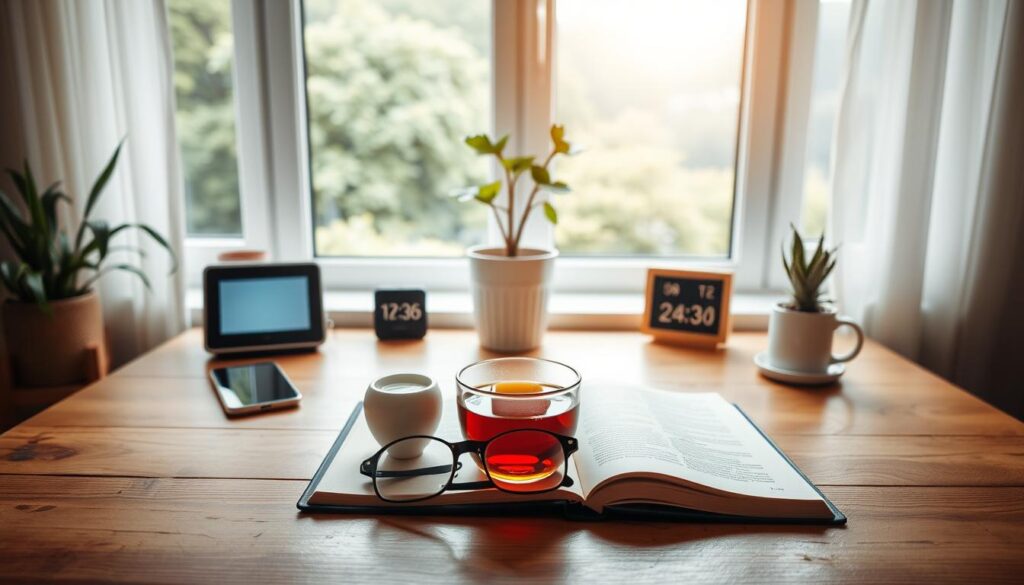
Exploring Different Detox Strategies
Looking for a healthier balance between tech use and well-being? There are many detox strategies to choose from. It’s important to know what’s out there.
Complete vs. Partial Detox
Choosing between a complete or partial detox is a big decision. A complete detox means no digital devices for a while. It’s good for those really into tech. A partial detox lets you pick when to use tech, making it easier for many.
Here’s a quick comparison:
| Detox Type | Description | Benefits |
|---|---|---|
| Complete Detox | Abstain from all digital devices | Deep reset, improved mental clarity |
| Partial Detox | Selective use of technology | More manageable, flexibility |
Daily Digital Breaks
Daily digital breaks are a smart move. They mean taking time off from screens. This can help you stay healthy and focused. For example, not using phones at meals or before bed can really help.
Tech-Free Zones in Your Home
Having tech-free zones at home is a great idea. It helps you use tech wisely. For instance, making your bedroom or dining area phone-free can improve sleep and family time.
Trying out these detox strategies can help you find what works best for you. This way, you can improve your overall health and happiness.
Measuring Your Detox Success
The real value of a digital detox is the lasting change it brings. This change can be measured by reflecting on your mental clarity, mood, and productivity after the detox.
Journaling Your Experiences
One great way to measure success is by journaling your experiences. Writing down your thoughts and feelings can give you deep insights. Reflecting on your journal can show you where you’ve grown.
Try journaling about mindfulness, like listing things you’re grateful for or thinking about tough moments. This can help you understand yourself and your tech use better.
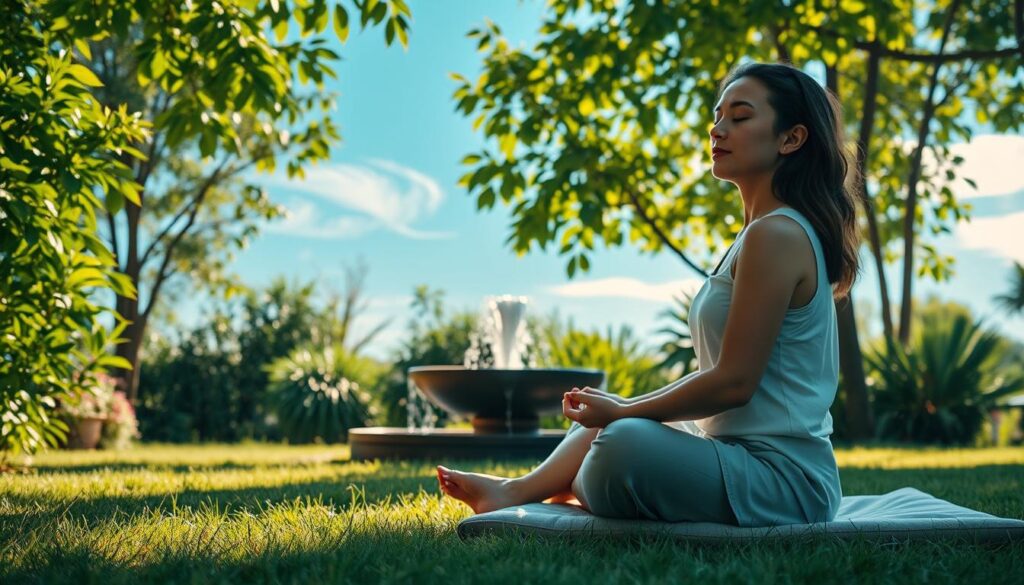
Reflecting on Changes in Mood
Another key part of measuring success is reflecting on mood changes. Have you felt less stressed or anxious? Are you more patient and calm? These changes show how the detox has helped your emotional health.
By noticing your mood and emotional responses, you can see which stress management techniques worked. This self-awareness is important for a healthy lifestyle.
Tracking Productivity Improvements
Tracking productivity improvements is also vital. Have you found it easier to focus and complete tasks? These changes show how the detox has affected your work or study habits.
Using self-care tips like taking breaks and setting priorities can boost your productivity. Combining these with detox insights can lead to a more balanced life.
Maintaining Balance Post-Detox
To keep the good vibes from a digital detox, it’s key to build healthy habits and think about yourself often. As you move forward, adding well-being strategies to your daily routine is a must.
Developing Healthy Tech Habits
Keeping balance means having smart tech habits. It’s about being aware of how much tech you use and setting limits. For example, make some areas of your home tech-free or have times when screens are off.
- Set specific times for checking emails and messages.
- Use apps that track and limit your screen time.
- Try offline activities like reading, journaling, or enjoying nature.
Regular Check-Ins with Yourself
Checking in with yourself regularly is vital for keeping balance after detox. It lets you see how you’re doing mentally and emotionally. You can spot areas to get better and tweak your habits and routines as needed.
Thinking about your feelings and experiences keeps you in touch with yourself. It helps you feel more connected and well.
| Check-In Questions | Purpose | Benefits |
|---|---|---|
| How am I feeling today? | Assess emotional state | Identify emotional triggers |
| What are my goals for the week? | Set priorities | Enhance focus and productivity |
| How have I used technology today? | Monitor tech habits | Maintain healthy boundaries |
Creating a Sustainable Lifestyle
Building a lasting lifestyle after detox means making big commitments to your health. This means picking healthy habits that help your body, mind, and spirit. This way, you keep the detox benefits going strong.
By making these habits part of your everyday, you keep the peace and balance from detox. This leads to a more lasting and whole approach to well-being.
Digital Tools to Promote Wellness
Technology can feel overwhelming, but there are tools made to help us relax. We’ll look at apps and tools that support mindfulness and self-care.
Apps to Encourage Mindfulness
Mindfulness apps are popular for helping people meditate and relax. Apps like Headspace and Calm offer personalized plans. They help reduce stress and clear your mind.
Key Features to Look for in Mindfulness Apps:
- Guided meditations
- Personalized mindfulness plans
- Progress tracking
Tools for Reducing Screen Time
Controlling screen time is key to digital wellness. Tools like Freedom and Moment track and limit screen time. They help you develop better digital habits.
| Tool | Function | Platform |
|---|---|---|
| Freedom | Blocks distracting apps and websites | iOS, Android, Mac, Windows |
| Moment | Tracks screen time and app usage | iOS, Android |
Using Technology Purposefully
It’s not just about cutting down screen time. It’s about using tech to improve our well-being. Apps can help with stress and self-care tips.
“Technology is a useful servant but a dangerous master.” – Christian Lous Lange
For a better digital detox, Amazon offers products like guided meditation journals and aromatherapy kits. They help with relaxation and mindfulness.
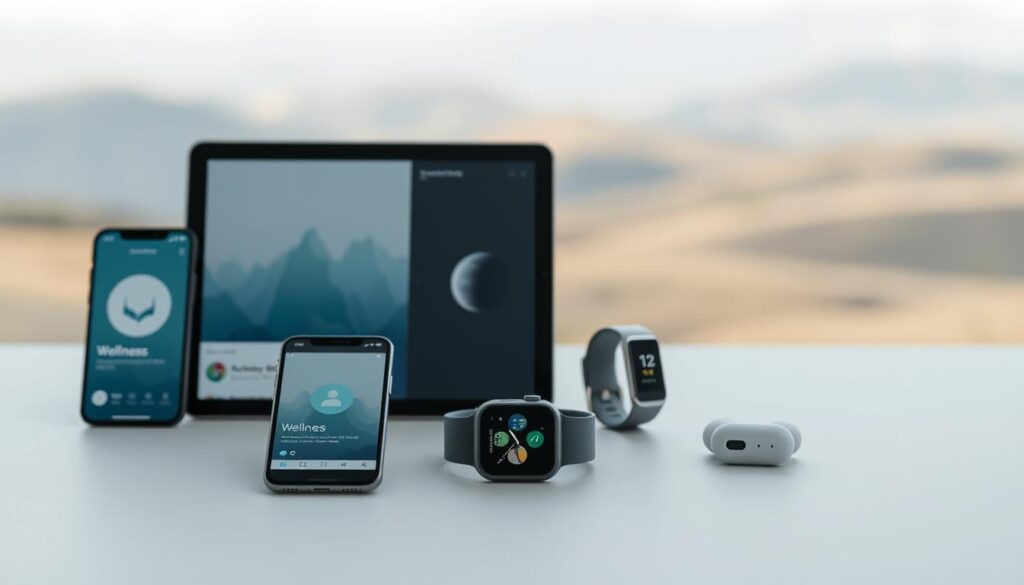
By using these digital tools daily, you can improve your tech use. This boosts your overall wellness.
Final Thoughts on Digital Detox and Wellness
Digital detoxes are key to keeping our minds clear and our well-being in check. By stepping away from screens, we connect more deeply with ourselves. This leads to a richer sense of holistic wellness.
Long-Term Benefits of Unplugging
Regular digital detoxes bring many benefits. They improve our mental health, boost productivity, and help us find our true selves. By adding well-being strategies to our daily lives, we manage stress better and live more balanced.
Embracing a Balanced Life
A balanced life mixes technology with peace. Setting limits on our devices and focusing on self-care helps us find harmony. This balance is essential for our well-being and supports our self-care.
Your Path to Enhanced Self-Care and Wellness
Keep moving forward on your path to better self-care and wellness. Small actions can make a big difference. Be aware of your digital habits and make smart choices. Start your digital detox today and see how it changes your life.
FAQ
What is a digital detox, and how can it benefit my mental health?
A digital detox means not using digital devices for a while. It helps reduce stress and improve focus. Taking a break from screens lets you calm your mind and recharge.
How do I know if I need a digital detox?
If you feel anxious or distracted from too much screen time, you might need a detox. Track your screen use and see how you feel without devices. This can help you spot areas for mental health improvement.
What are some common triggers for digital overload?
Triggers include constant notifications and social media pressure. Work demands and the need to stay connected also play a part. Easy access to digital entertainment is another trigger.
How can I plan a successful digital detox?
To plan a detox, set achievable goals like a weekend or week-long break. Choose activities that make you happy, like reading or nature walks. Tell your loved ones and find ways to manage tasks without devices.
What are some tips for maintaining balance post-detox?
After detox, set screen-free times and places. Use mindfulness apps and schedule digital breaks. Regularly check your digital habits to keep a healthy balance.
Are there any digital tools that can help me stay on track with my self-care and wellness goals?
Yes, many digital tools support self-care. Try mindfulness apps like Headspace or Calm. Use screen time trackers and find wellness tips online. You can find related products on amazon.com.
How can I measure the success of my digital detox?
Journal your detox experience and reflect on mood changes. Track productivity improvements. Notice how you feel before and after the detox to gauge success.



